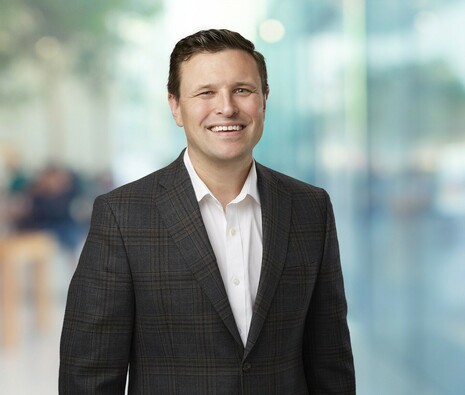401(k) Fee Litigation: Coming to a District Court Near You…
Until recently, the Carolinas were relatively immune to litigation surrounding alleged excessiveness of 401(k) plan fees. But last month in the U.S. District Court for the Western District of North Carolina, employees of big-box retailer Lowe’s filed a complaint alleging that the company’s fiduciary decisions to replace certain investments funds with a “largely untested” and “underperforming” alternative caused the loss of millions of dollars in potential earnings for plan participants. While fiduciary actions are common during economic downturns, this matter – coupled with the development of relevant case law – suggests that allegations involving 401(k) plan costs and lost investment opportunities may become just as common during a boom.
The lawsuit is called Reetz v. Lowe’s Companies, Inc., Case No. 5:18-cv-75, and can be accessed here.
The Lowe’s Lawsuit
The Facts
Filed April 27, 2018, as a proposed class action, the complaint alleges that Lowe’s, its 401(k) Plan Administrative Committee (both as a committee and its members individually) and Aon Hewitt, the plan’s fiduciary investment consultant, imprudently shifted $1 billion of its plan assets to a new and untested fund established and managed by Hewitt. According to the complaint, in addition to the investment analysis and recommendations it provides to clients in its fiduciary capacity, Hewitt began marketing and offering its own line of investment funds to plan sponsors at the end of 2013. As it began marketing these funds to clients, the plaintiffs allege “(t)he overwhelming majority of 401(k) plan sponsors did not fall for the sales pitch, and rejected Hewitt Funds for their plans through their own fiduciary screening process . . . Lowe’s was not as discerning, and began offering three Hewitt Funds in the Plan in 2015.”
According to the complaint, Lowe’s not only added the new Hewitt fund options, but also removed what its Administrative Committee considered similar funds from the plan, transferring plan assets from those investments to the new funds. The complaint alleges that the transfer “constituted approximately half of the Plan’s total asset base in pooled investment vehicles (i.e., assets other than Lowe’s Corp. stock).” And to highlight what they characterize as an extraordinary fiduciary decision, the plaintiffs note that Lowe’s decision to invest in the Hewitt funds dwarfed all other plans invested in the Hewitt fund; the Lowe’s portion was close to 75 percent of the total investment, while only two other retirement plans had invested in the Hewitt fund, and those investments amounted to about $350 million combined.
From 2013 to 2015, according to the complaint, one Hewitt fund reported negative returns of 0.67 percent, while the funds it replaced had a weighted average return of 7.3 percent. From 2015 to 2018, although the fund underperformed its benchmarks, it returned 11.99 percent, while the other plan benchmarks returned 14.11 percent. The plaintiffs allege that this investment shift caused over $100 million in losses when comparing the investment gains from the Hewitt fund to the weighted returns of the funds it replaced.
The Causes of Action
The primary cause of action against all defendants was breach of their fiduciary duties of loyalty and prudence, both in the selection and the monitoring of the plan’s investments. The plaintiffs highlight the Hewitt funds’ limited track record, poor performance history, unpopularity among other retirement plan fiduciaries and lack of investment from other investors as reasons why a prudent investor acting solely in the interest of plan participants would not have selected the fund. Moreover, the complaint alleges that Lowe’s decision to replace eight existing funds for the one fund essentially “changed the character of the Plan.” Those removed funds “constituted a diversified set of investment options that allowed participants to choose between large cap, mid cap, small cap, and international stocks”; that, in turn, enabled participants to “customize their asset allocation and risk profile depending upon their investment timeframe, financial goals, risk tolerance, and individualized assessments of which classes offered the best potential for investment success.”
The complaint also alleges that Lowe’s and its Administrative Committee failed to monitor Hewitt as a fiduciary. According to the complaint, Lowe’s failed in its duty to take “prompt and effective action to protect the Plan and its participants.”
In addition to seeking class designation, the plaintiffs seek equitable and injunctive relieve, including an accounting of profits earned by Hewitt as investment consultant and restoration of participants to their investment position prior to the removal and replacement of funds.
Takeaways
While the scale of these allegations may be far removed from the average retirement plan (Lowe’s plan has over 262,000 participants and about $5.2 billion in investments), plan sponsors of all sizes can learn from this case. Here are some important takeaways to consider:
- Do you have an investment committee? Perhaps most important, the Lowe’s case emphasizes the need for a strong, proactive plan investment committee that meets regularly and closely monitors the performance of its investments. Often, these committees need to consult with investment professionals to better understand the ever-evolving financial marketplace.
- Do you have an Investment Policy Statement? Do you follow it? Plan sponsors also should make sure their investment committee relies on an Investment Policy Statement (IPS) that outlines the processes and procedures it uses to select, remove and replace plan investment funds. More important (and often more difficult), committees should actually use the IPS. The statement should be a living, breathing document that is updated to reflect investment goals and applied to monitor and maintain the plan’s investment lineup.
- As a fiduciary, serving on an investment committee has some risks. Note in the lawsuit that the members of the investment committee were sued in their individual capacity. This demonstrates that serving on an employer’s investment committee is not a perfunctory appointment, but instead can carry significant responsibility. Plan sponsors must take this lesson to heart by ensuring that committee members can devote the appropriate time and resources to their important task.
- Divided Loyalties. Beware of situations where a service provider appears to be wearing multiple hats. For example, you should closely scrutinize cases in which a provider represents itself as serving in an independent capacity, but also is recommending a related service or product. While these situations do not create an automatic issue, plan sponsors should take extra care to independently verify and confirm the representations made.
- Benchmark performance. On its face, the Hewitt fund appeared to perform well over the period at issue, with nearly a 12 percent return. In times of economic boom and when compared to benchmarks in the industry, however, that 12 percent may seem paltry. Despite plans’ robust returns over the past few years, plan sponsors may actually experience an uptick in this type of litigation, as plaintiffs see that low-cost, passively managed funds outperform many higher-priced, actively managed funds.
- Information overload. With mandatory electronic filing of Department of Labor Form 5500s came third parties like Brightscope that data mine employers’ 5500s and provide easily digestible summaries of performance for employees (and plaintiff attorneys). Plan sponsors should be mindful of how these third parties characterize their retirement plans: Are they underperforming or overperforming according to these websites? While the Form 5500s cannot possibly paint a retirement plan’s full picture, the returns could put the plan in an unwanted (and unwarranted) category.
If you would like additional help on this and other issues related to 401(k) plans, contact the Nexsen Pruet Employment & Labor Law group.
Our Insights are published as a service to clients and friends. They are intended to be informational and do not constitute legal advice regarding any specific situation.
About Maynard Nexsen
Maynard Nexsen is a full-service law firm of nearly 600 attorneys in 31 locations from coast to coast across the United States. Maynard Nexsen was formed in 2023 when two successful, client-centered firms combined to create a powerful national team. Maynard Nexsen’s list of clients spans a wide range of industry sectors and includes both public and private companies.
Related Capabilities








